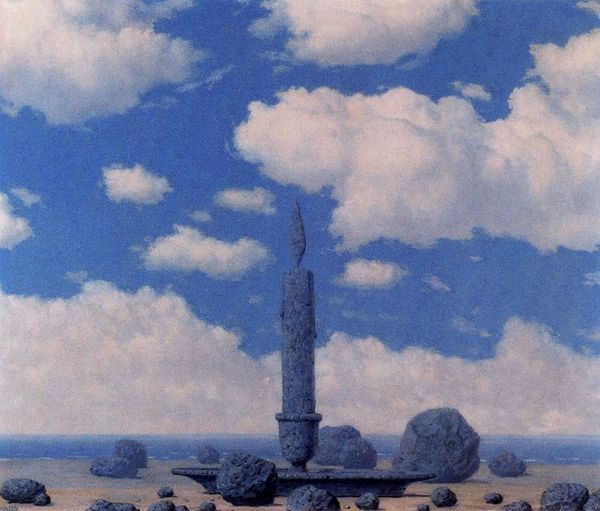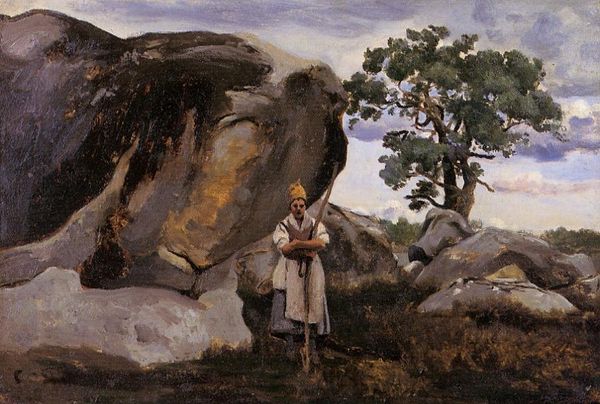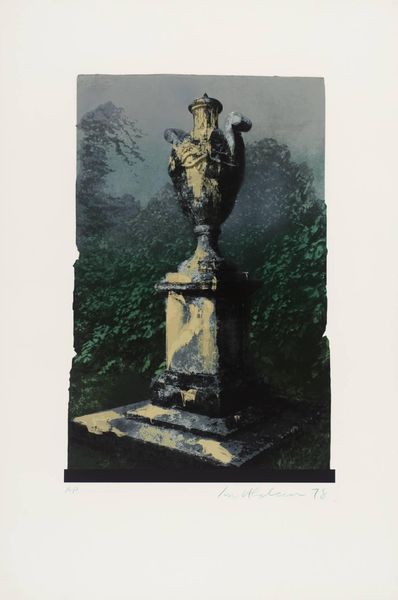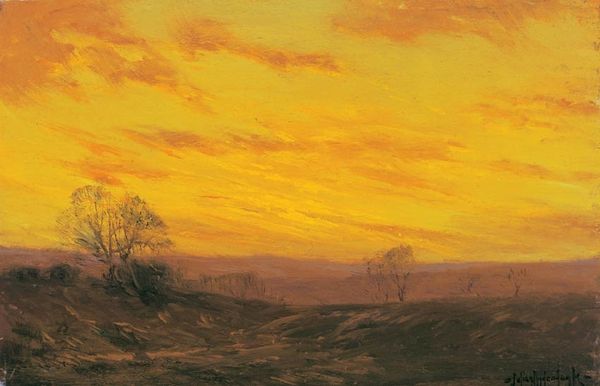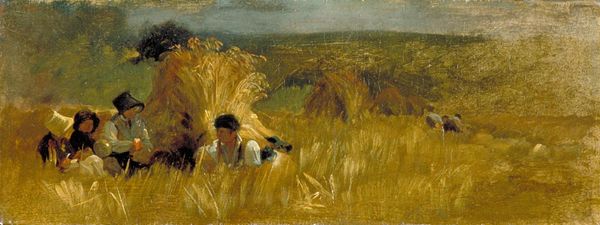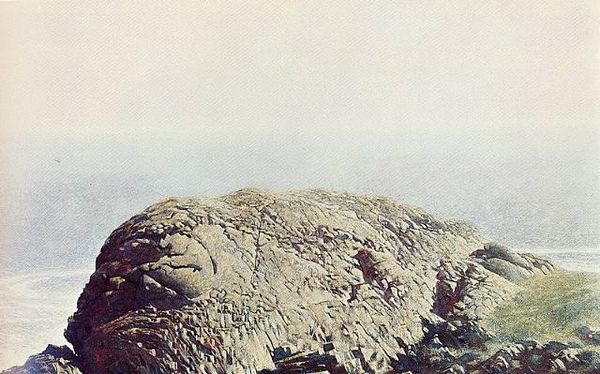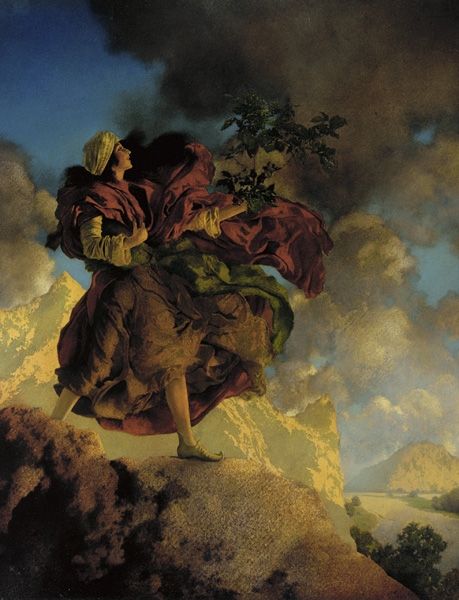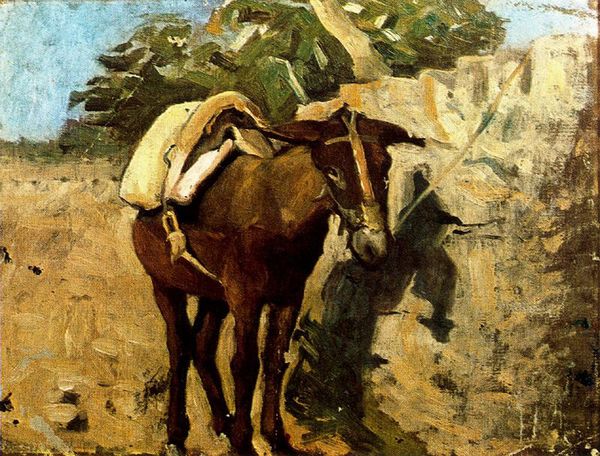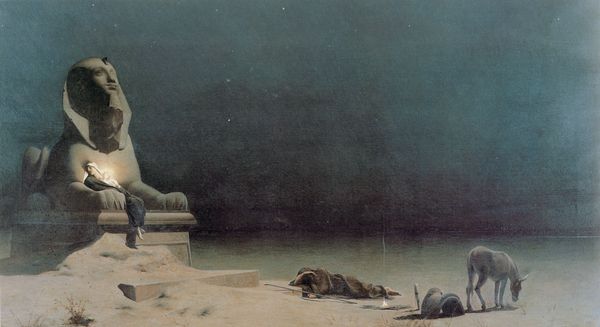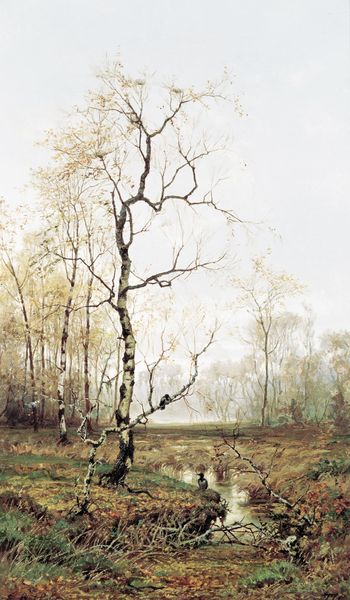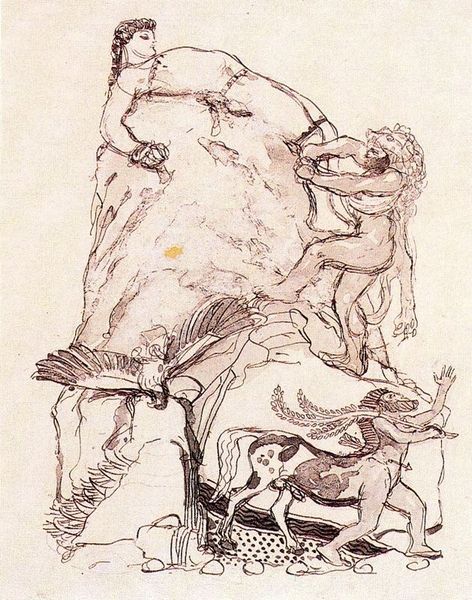
Copyright: Public domain
Editor: Here we have Vasily Vereshchagin's "Ruins in Chuguchak," painted in 1869. It depicts a weathered stone lion amidst architectural ruins. There's a sense of abandonment here. What can you tell me about this piece? Curator: From a materialist perspective, consider the stone itself – likely sourced locally, each brick and carved element shaped by laborers whose names are now lost to us. This wasn't just a commission, but a product of extraction and manufacture within a specific socio-economic system. Editor: So the material carries the story? Curator: Precisely. Think about what it meant to transport and carve such a large sculpture. The wear and tear suggests a gradual erosion, yes, but it also raises questions about deliberate acts of destruction or neglect over time. Who benefited from this monument? Whose labor created it, and who might have sought to dismantle it, either physically or symbolically? How does it mirror social issues? Editor: That's a perspective I hadn't considered. The ruins become more than just a backdrop, but a statement about labor, destruction, and even a reflection on trade. Curator: Indeed. Vereshchagin, as a painter trained in European traditions, also engaged in a process of "making." His "Orientalist" gaze shaped his portrayal and by implication, a European vision that could itself also become merchandise of soft power. What stories did these painting feed and what impact could the work have when disseminated? Editor: It’s amazing how shifting the focus to material processes really enriches the whole context of the art, I'll need to explore that much more. Curator: Material processes always hold an infinite range of interpretations and help us understand our values.
Comments
No comments
Be the first to comment and join the conversation on the ultimate creative platform.
